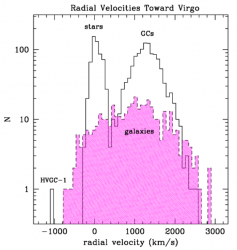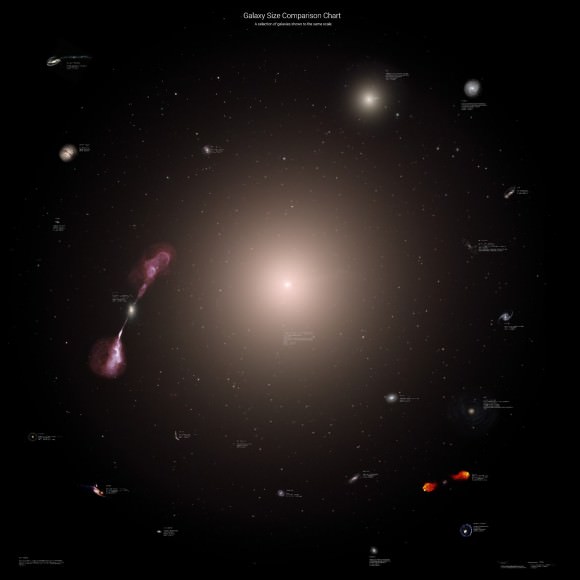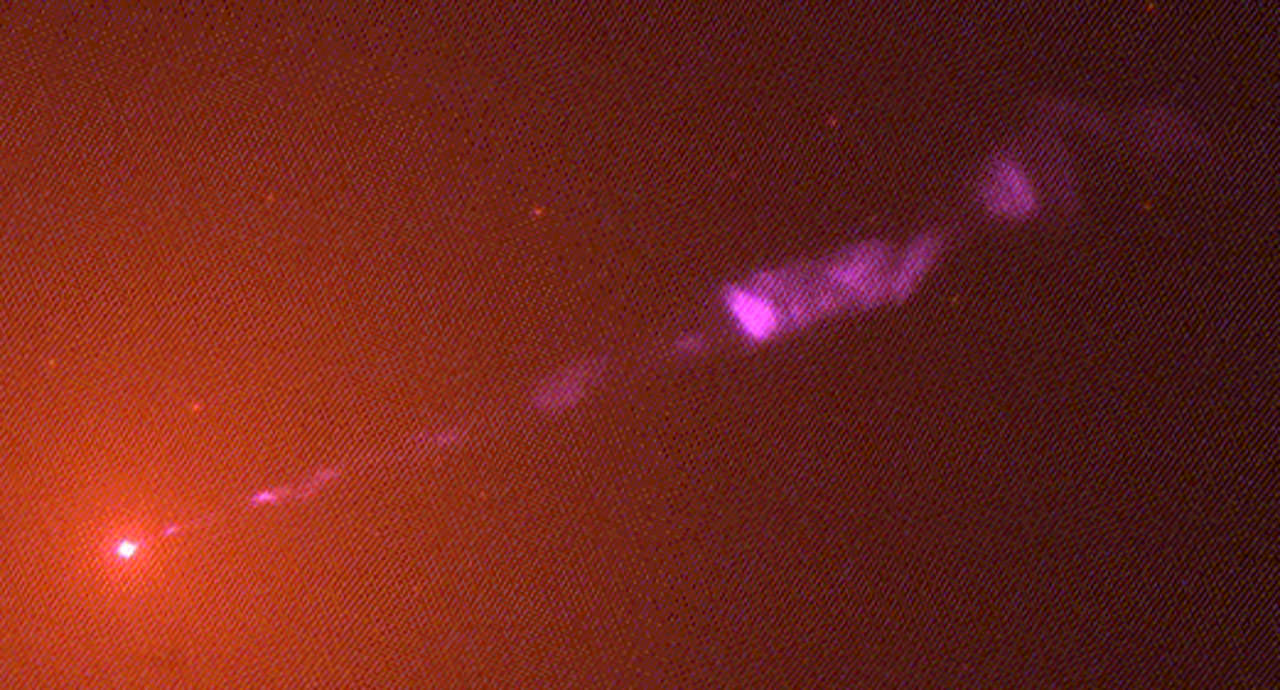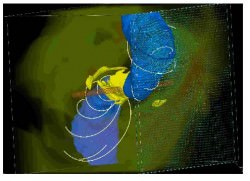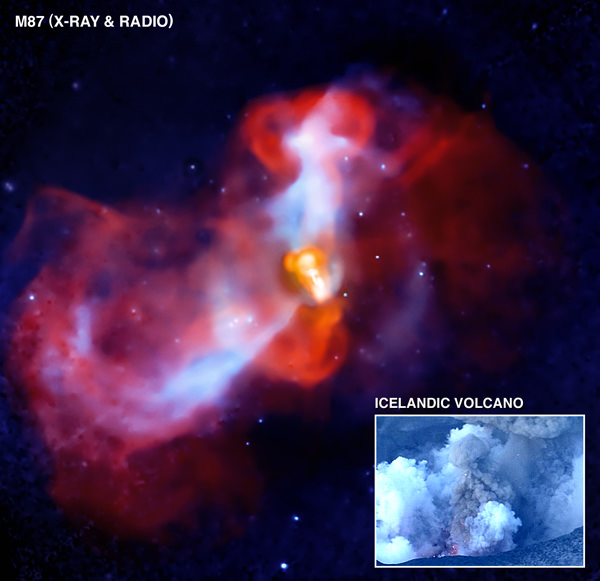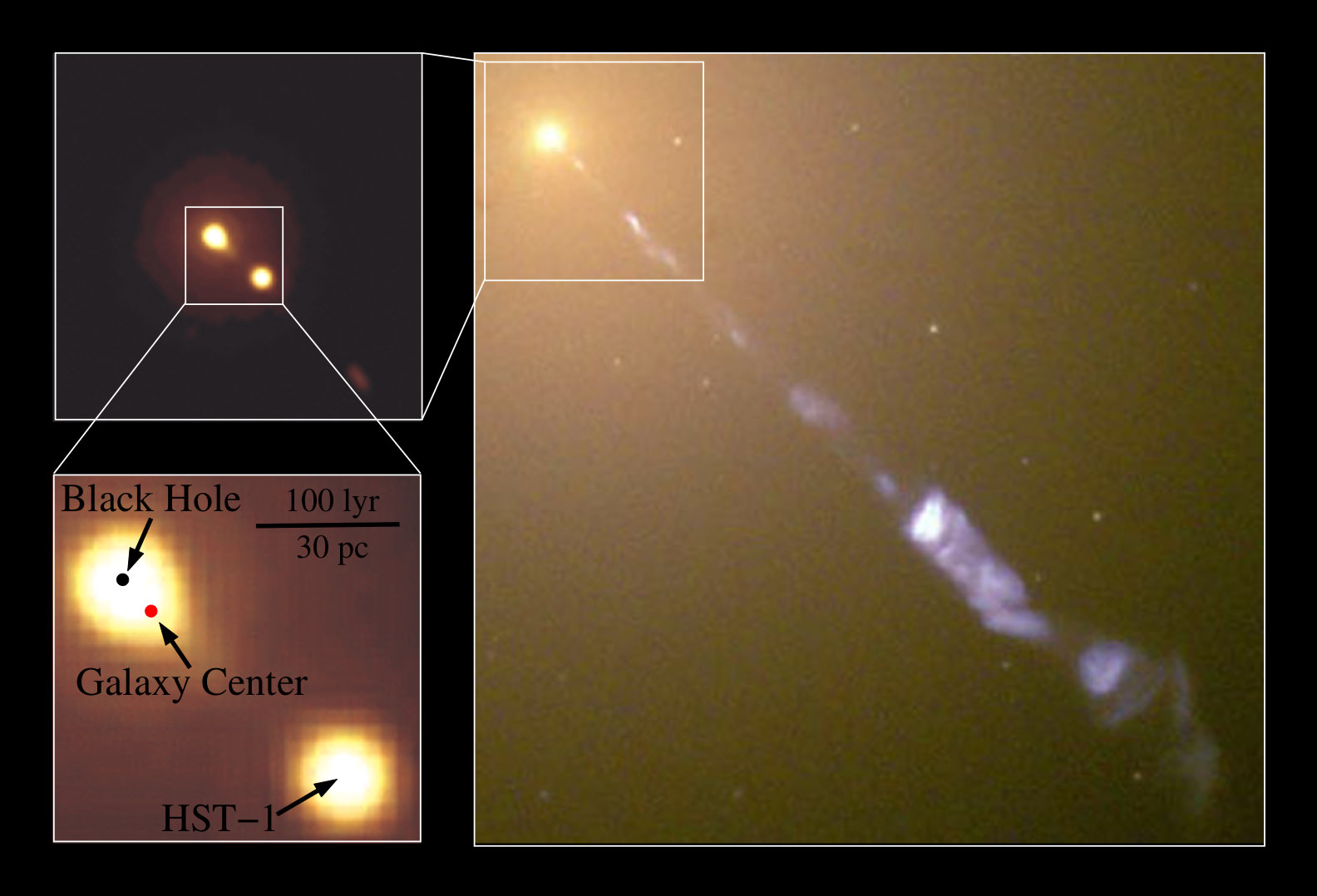We talk about stellar mass and supermassive black holes. What are the limits? How massive can these things get?
Without the light pressure from nuclear fusion to hold back the mass of the star, the outer layers compress inward in an instant. The star dies, exploding violently as a supernova.
All that’s left behind is a black hole. They start around three times the mass of the Sun, and go up from there. The more a black hole feeds, the bigger it gets.
Terrifyingly, there’s no limit to much material a black hole can consume, if it’s given enough time. The most massive are ones found at the hearts of galaxies. These are the supermassive black holes, such as the 4.1 million mass nugget at the center of the Milky Way. Astronomers figured its mass by watching the movements of stars zipping around the center of the Milky Way, like comets going around the Sun.
There seems to be supermassive black holes at the heart of every galaxy we can find, and our Milky Way’s black hole is actually puny in comparison. Interstellar depicted a black hole with 100 million times the mass of the Sun. And we’re just getting started.
The giant elliptical galaxy M87 has a black hole with 6.2 billion times the mass of the Sun. How can astronomers possibly know that? They’ve spotted a jet of material 4,300 light-years long, blasting out of the center of M87 at relativistic speeds, and only black holes that massive generate jets like that.
Most recently, astronomers announced in the Journal Nature that they have found a black hole with about 12 billion times the mass of the Sun. The accretion disk here generates 429 trillion times more light than the Sun, and it shines clear across the Universe. We see the light from this region from when the Universe was only 6% into its current age.
Somehow this black hole went from zero to 12 billion times the mass of the Sun in about 875 million years. Which poses a tiny concern. Such as how in the dickens is it possible that a black hole could build up so much mass so quickly? Also, we’re seeing it 13 billion years ago. How big is it now? Currently, astronomers have no idea. I’m sure it’s fine. It’s fine right?
We’ve talked about how massive black holes can get, but what about the opposite question? How teeny tiny can a black hole be?

Astronomers figure there could be primordial black holes, black holes with the mass of a planet, or maybe an asteroid, or maybe a car… or maybe even less. There’s no method that could form them today, but it’s possible that uneven levels of density in the early Universe might have compressed matter into black holes.
Those black holes might still be out there, zipping around the Universe, occasionally running into stars, planets, and spacecraft and interstellar picnics. I’m sure it’s the stellar equivalent of smashing your shin on the edge of the coffee table.
Astronomers have never seen any evidence that they actually exist, so we’ll shrug this off and choose to pretend we shouldn’t be worrying too much. And so it turns out, black holes can get really, really, really massive. 12 billion times the mass of the Sun massive.
What part about black holes still make you confused? Suggest some topics for future episodes of the Guide to Space in the comments below.



